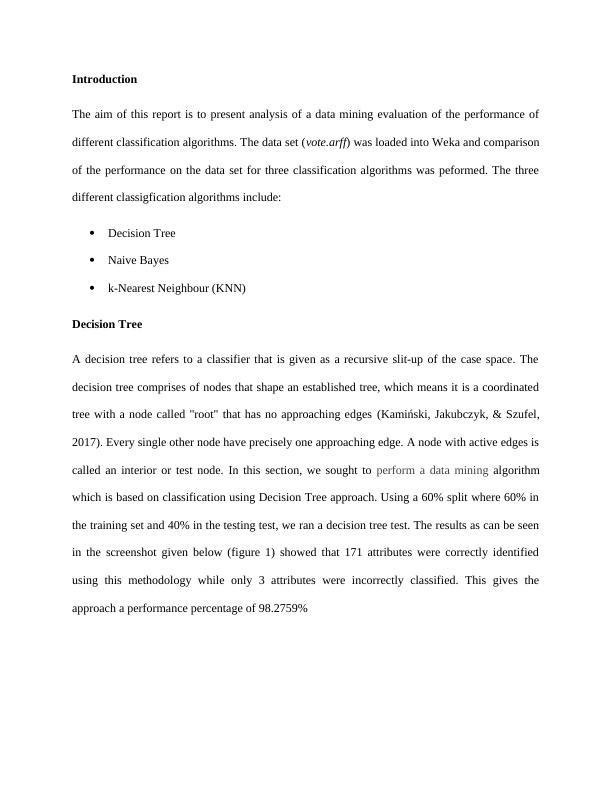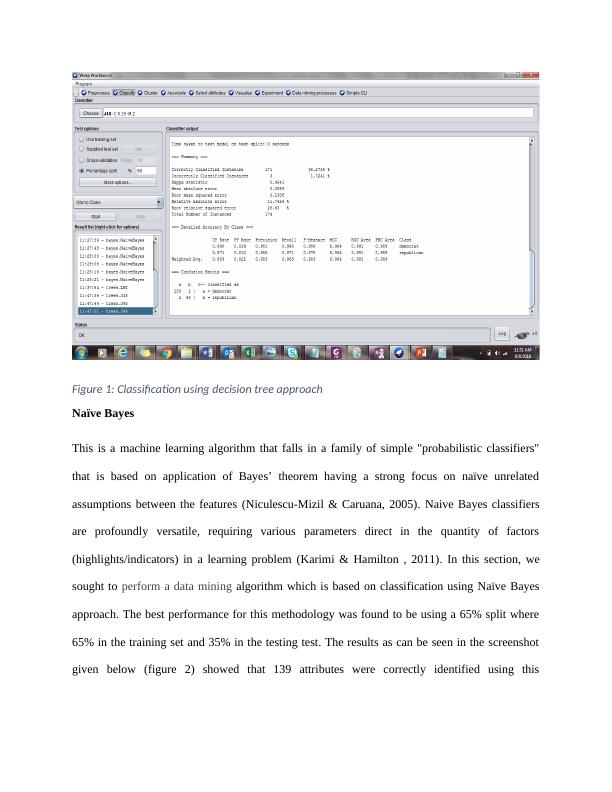Data Mining and Visualization: Performance Comparison of Classification Algorithms
Added on 2023-06-05
6 Pages956 Words66 Views
End of preview
Want to access all the pages? Upload your documents or become a member.
Comparative Exploration of KNN, J48 and Lazy IBK Classifiers in Weka
|19
|2887
|140
Data Mining and Visualization for Business Intelligence
|14
|1554
|444
Data Mining Case Study 2022
|25
|1821
|23
Data Mining for Cardiac Arrhythmia Detection using KNN, Naive Bayes, SVM, Gradient Boosting, Model Tree and Random Forest
|10
|4822
|461
Text Classification Using Naïve Bayes
|15
|1230
|324
Assignment on Intelligent Systems for Analytics
|47
|6004
|28



